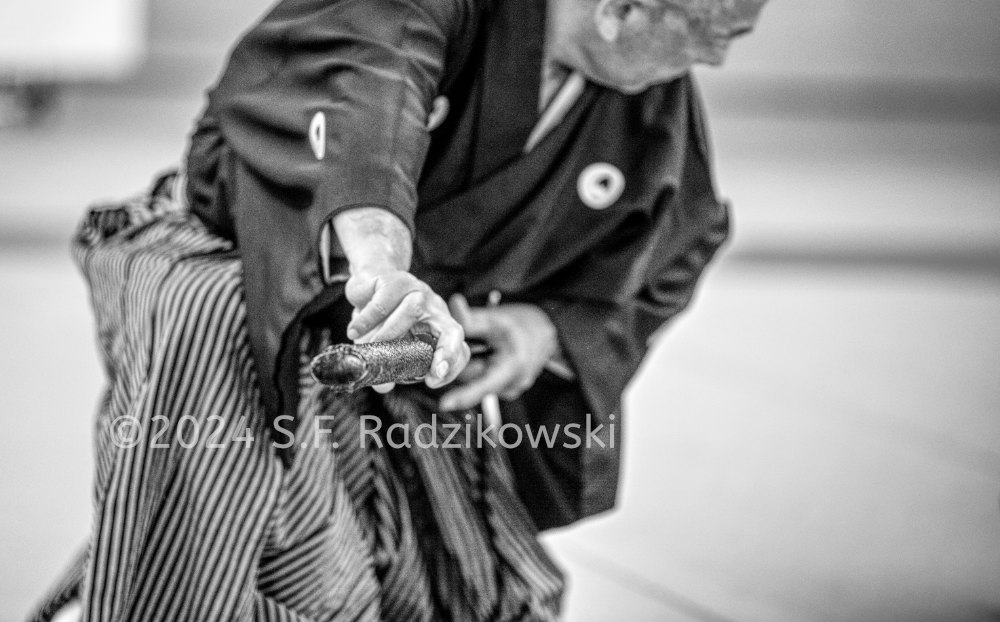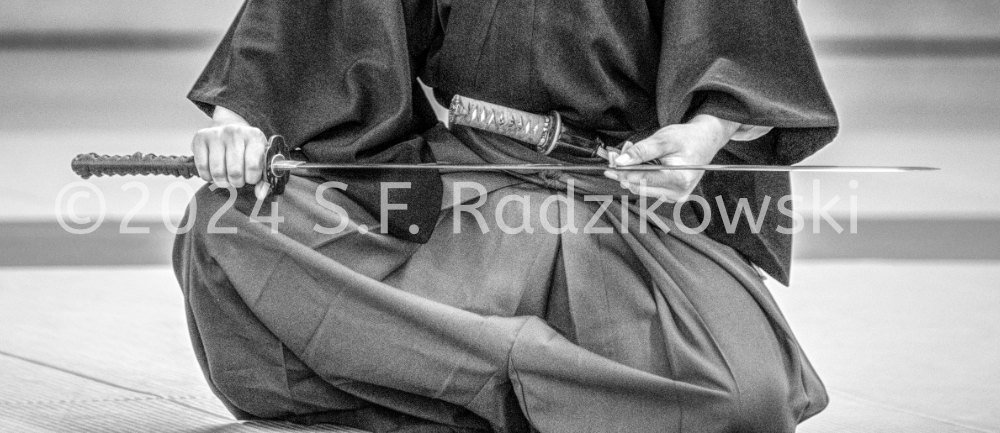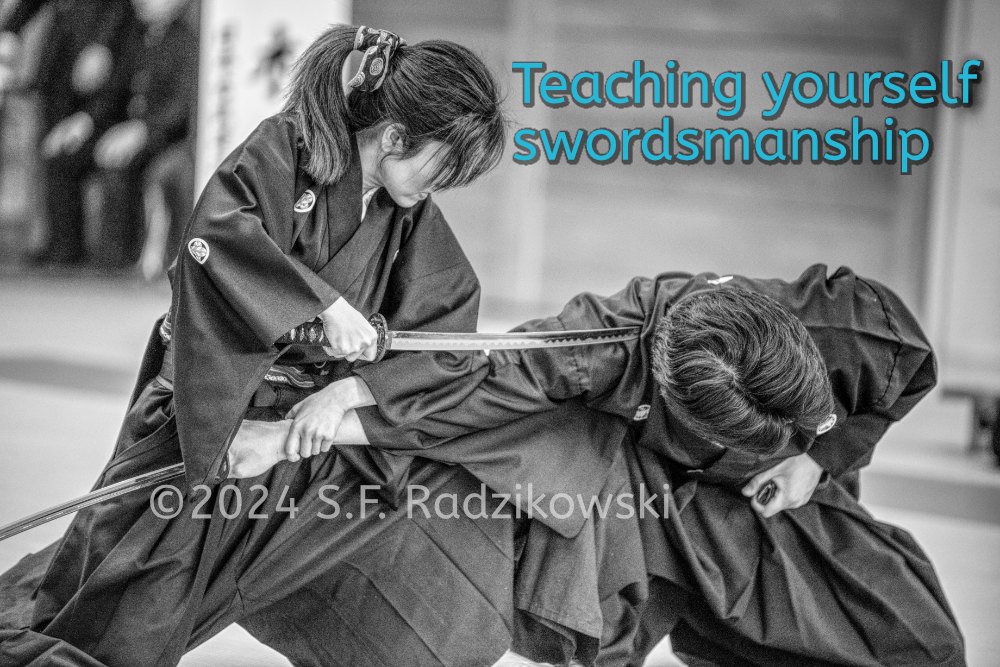The Challenges of Self-Learning Swordsmanship
In martial arts, particularly in the study of swordsmanship, a question frequently arises: "Is it possible to self-learn the art of the sword?" This inquiry, while understandable given the allure of swordsmanship, requires careful consideration. Let us explore the complexities of this topic and examine why there may be better approaches than the path of self-instruction in sword arts such as iaido or kenjutsu.
The Appeal of Swordsmanship
The sword holds a unique place in human history and imagination. Its presence in literature, film, and various art forms has romanticized the idea of wielding a blade with skill and precision. This cultural significance naturally draws many to explore the art of swordsmanship. However, it is crucial to distinguish between the romanticized notion and the realities of martial arts practice.
The Limitations of Self-Learning
While autodidacticism has its merits in many fields, particularly in our information-rich age, the nuanced nature of swordsmanship presents unique challenges to self-instruction. Consider the following points:
1. Complexity of Combat: Swordsmanship is fundamentally an art of engagement with another person. The intricacies of combat cannot be fully grasped through solo practice alone.
2. Depth of Knowledge: Depth of Knowledge: Classical sword arts possess layers of depth that are not immediately apparent to the untrained eye. Attempting to learn from visual sources without proper context can lead to significant misunderstandings. Moreover, even to the trained eye, there are as many ways of executing techniques as ryū-ha (流派, schools or styles). Each ryū-ha has its unique principles, philosophies, and methodologies that have been refined over centuries. This diversity of approaches makes it exceptionally challenging for a self-learner to discern which method is most appropriate or authentic, let alone master the nuances of any particular style. For instance, the angle of a cut, the positioning of the feet, or the timing of a technique might vary subtly but significantly between different ryū-ha. These variations are not arbitrary but are often rooted in deep philosophical or practical considerations specific to each school. Without guidance from a knowledgeable instructor who understands these distinctions, a self-learner risks misinterpreting or oversimplifying these crucial differences.
3. Lack of Feedback: Without a knowledgeable instructor, how can a practitioner identify and correct errors in their form or technique?

4. Historical Precedent: Throughout history, the transmission of sword arts has primarily relied on direct instruction. Even legendary figures like Miyamoto Musashi, often portrayed as self-taught, likely received some form of formal training in his early years. While the exact details of Musashi's early training are not definitively known, historical records suggest he may have received instruction from his father, Munisai, who was a martial artist, and possibly from other local sword masters. Musashi's case is complex and often misunderstood. While he did develop his own unique style (Niten Ichi-ryū) later in life, this was built upon a foundation of earlier training and extensive real combat experience. His journey exemplifies not pure self-teaching but the potential for innovation after mastering fundamentals through traditional means. It's crucial to understand that even in cases where historical masters appear to have been self-taught, they typically had access to resources that modern practitioners lack: a cultural context where sword use was commonplace, opportunities for real combat experience, and often some form of initial guidance or instruction.
The Role of Proper Instruction
Experienced practitioners and teachers universally emphasize the importance of proper instruction. This consensus is not arbitrary but based on centuries of martial arts tradition. A qualified instructor provides:
- Guidance to develop correct foundational skills
- Prevention of harmful habits that may be difficult to unlearn later or even unsafe
- Insights into the philosophical and cultural aspects of the art
- A structured curriculum that ensures comprehensive learning
Addressing Common Arguments for Self-Learning
Some may argue for self-learning due to financial constraints or a lack of local instructors. However, these challenges can often be addressed:
- Many legitimate dojos offer flexible payment options for dedicated students
- In the digital age, distance learning with a proper instructor is a viable alternative to purely self-directed study
A Real-World Example: The Perils of Self-Learning Iaido

To illustrate the challenges of self-learning swordsmanship, let us examine a candid account from a practitioner who attempted to self-learn iaido. Let's call him Mr. E. This example provides valuable insights into the practical difficulties one might encounter when trying to master this art without proper guidance.
Background and Motivation
Mr. E is an experienced Kendoka with over a decade of practice and some prior exposure to iaido; he decided to attempt self-learning a Koryu sword art after completing Seitei Iaido training with an instructor. Their motivation stemmed from:
- Limited access to formal Iaido dojos
- The abundance of online resources, including instructional videos
- A desire to explore Koryu as "the ultimate form of Iaido."
This scenario is common, particularly for practitioners outside Japan, where access to formal instruction may be limited or even impossible.
The Self-Learning Experience
Despite having a solid foundation in sword arts, Mr. E encountered several significant challenges:
- Lack of Proper Reiho (Etiquette) Instruction: The author quickly realized the difficulty in learning proper reiho, a fundamental aspect of Japanese martial arts, through videos alone. This highlights the importance of cultural and philosophical elements often overlooked or ignored in self-study approaches.
- Difficulty in Grasping Detailed Movements: Even with step-by-step video instructions, the author struggled to follow and replicate entire waza (techniques) accurately. This experience underscores the limitations of learning without direct feedback from a teacher.
- Challenges in Self-Correction: Perhaps most tellingly, the author found it nearly impossible to effectively self-correct. Without the experienced eye of a sensei or senior student, identifying and addressing subtle errors in technique proved to be a significant hurdle.
Key Takeaways
Mr. E's experience yields several important insights for aspiring practitioners:
- The Value of Instruction: The ability to ask questions, observe techniques from various angles, and receive immediate feedback is irreplaceable in martial arts training.
- The Risk of Developing Bad Habits: Without proper guidance, practitioners may unknowingly develop incorrect techniques or harmful habits that could be difficult to unlearn later.
- The Importance of Cultural Context: Proper understanding and practice of reiho and other cultural elements are integral to the holistic study of Japanese sword arts.
- The Limitations of Youtube Learning: While instructional videos can be valuable supplements, they cannot fully replace the depth and breadth of knowledge transmitted through direct instruction.
Reflection Questions
As we consider Mr. E's journey, let us ponder:
- How might the outcomes have differed if the author had access to even occasional in-person instruction or direct feedback from a teacher?
- In what ways does this experience highlight the importance of the student-teacher relationship in martial arts?
- How can aspiring practitioners balance their enthusiasm for learning with the patience required to seek proper instruction?
Safety Considerations
Beyond the quality of instruction, safety is a paramount concern in swordsmanship. Improper technique can lead to serious injuries, even with training weapons. The guidance of an experienced instructor is crucial in minimizing these risks.
A Balanced Approach
While self-study alone is not advisable for beginners, it can complement formal instruction for experienced practitioners. Books, videos, and historical documents can serve as valuable supplements to structured training under a qualified teacher.
Reflection for Aspiring Swordsmen
As you contemplate your journey in swordsmanship, consider the following questions:
1. What are your true motivations for learning the sword arts?
2. How can you balance your enthusiasm with the patience required for proper instruction?
3. How might a teacher's guidance enhance your understanding beyond what you can achieve alone?
The real-world example we've examined serves as a poignant reminder of the complexities involved in mastering sword arts. It underscores the irreplaceable value of proper instruction, not just for technical proficiency, but for cultivating the deeper understanding and respect that are hallmarks of true martial artistry.
The path of the sword is one of discipline, dedication, and continuous learning. While the desire to self-learn is admirable, the most effective and authentic way to master swordsmanship remains through proper instruction. By seeking out qualified teachers and embracing the traditional methods of transmission, you honor the depth and complexity of these ancient arts. Remember, the journey of a thousand miles begins with a single step – let that step be guided by the wisdom of those who have walked the path before you.
©2024 Shinkan-ryū Kenpō


